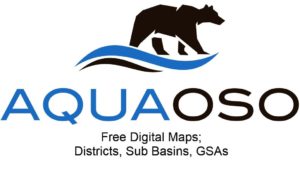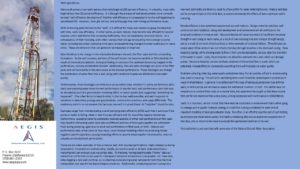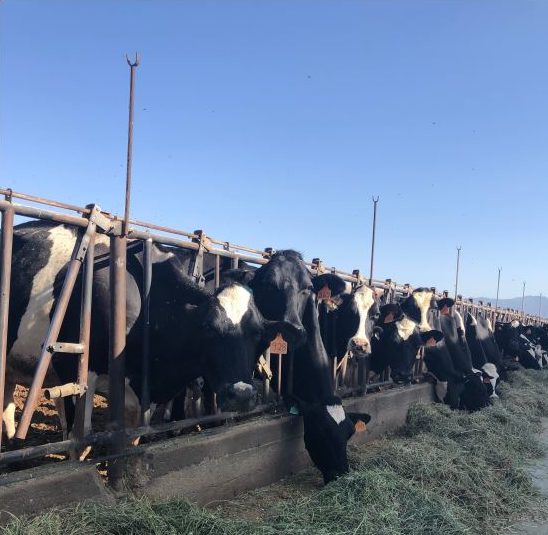 The Greater Kaweah Groundwater Sustainability Agency held a Monday, March 25, 2019 combined meeting of its Rural Communities Committee and its Stakeholders Committee. I had a political thought; since Mueller did a big document dump last Friday afternoon that included his report that found no collusion between President Donald Trump and the Russians, perhaps we can get on with draining the swamp and perhaps the drained water can be routed to the Valley.
The Greater Kaweah Groundwater Sustainability Agency held a Monday, March 25, 2019 combined meeting of its Rural Communities Committee and its Stakeholders Committee. I had a political thought; since Mueller did a big document dump last Friday afternoon that included his report that found no collusion between President Donald Trump and the Russians, perhaps we can get on with draining the swamp and perhaps the drained water can be routed to the Valley.
In any event Chairman Brian Watte called the meeting to order at 10: 30am or so. The minutes were approved and Executive Director Eric Osterling updated the board on the Technical Advisory Committee findings so far. He pointed out there is a legal memo stating there are three buckets of water in the GKGSA: native water, foreign water and salvaged water. Native is precipitation, natural channel seepage, irrigation return flows and mountain front inflows. Foreign water is mostly imported Friant water and salvaged water is complicated. Salvaged water originated in the Kaweah watershed and includes irrigation return flows. There was a NASA Airborne Snow Observatory flight over the Kaweah watershed this past weekend. That will help set up the sources of water.
30am or so. The minutes were approved and Executive Director Eric Osterling updated the board on the Technical Advisory Committee findings so far. He pointed out there is a legal memo stating there are three buckets of water in the GKGSA: native water, foreign water and salvaged water. Native is precipitation, natural channel seepage, irrigation return flows and mountain front inflows. Foreign water is mostly imported Friant water and salvaged water is complicated. Salvaged water originated in the Kaweah watershed and includes irrigation return flows. There was a NASA Airborne Snow Observatory flight over the Kaweah watershed this past weekend. That will help set up the sources of water.
Sustainable Management Criteria
The Michelle Ricker GEI Consulting gave the board an update on the Sustainable Management Criteria coordination. An assumed drawdown of 100 feet for ag and municipal wells and a 50 feet drawdown for domestic wells was used to develop a groundwater impact analysis. She showed a map of the Kaweah Sub Basin showing the unofficial management zones used to come up will well monitoring sites. I’m calling them unofficial because there are not required under SGMA but were chosen by hydrological and soil characteristics. Based on the DWR Best Management Practices there should be four or five  monitoring wells every 100 square miles; somewhere between 20 and 70. Osterling said he cringed when first presented with the term management zone due to its use in Central Valley Salts but his is much different. Ricker showed a graph of groundwater levels over 20-years for the eastern most zone. This info was mixed with projections for the next 20-years and the estimated loss is about four feet annually. There was another graph showing 274 ag wells that was almost undecipherable but it showed dewatering to the top and bottom of screened areas. Almost all of the graphs and charts were difficult to read, both the print and projected versions. However, the question was – what percentage of monitoring wells would have to show undesirable results to exceed the SMC? Also, what if any mitigation should the GSA provide to domestic wells impacted?
monitoring wells every 100 square miles; somewhere between 20 and 70. Osterling said he cringed when first presented with the term management zone due to its use in Central Valley Salts but his is much different. Ricker showed a graph of groundwater levels over 20-years for the eastern most zone. This info was mixed with projections for the next 20-years and the estimated loss is about four feet annually. There was another graph showing 274 ag wells that was almost undecipherable but it showed dewatering to the top and bottom of screened areas. Almost all of the graphs and charts were difficult to read, both the print and projected versions. However, the question was – what percentage of monitoring wells would have to show undesirable results to exceed the SMC? Also, what if any mitigation should the GSA provide to domestic wells impacted?
Osterling said this criteria can be changed over time as we learn more but one must begin somewhere. Ricker concurred; as more data and experience are gathered things can be changed. She said it will be much easier to set a lower groundwater level and then raise it in the future than the reverse.
GSP Development
Ricker reported on GSP development. She listed; basin setting, monitoring network, sustainability and undesirable  results, SMC and projects and management actions are all chapters in the Groundwater Sustainability Plan for the Kaweah Sub Basin. Osterling said defining the limits for undesirable results will be the heaviest lifting from now to the end of the year. He said the project work even is started today will take five-years to begin showing results. He asked the committee to consider the ideal and the cost benefit of putting land back into habitat. Money’s going to drive this part. He said taking 10 percent out of the problem in the first five-years is a reasonable goal. Osterling said increasing digital monitoring over time will also help refine data. The development milestones show a healthy optimistic of completing the draft for all eight GSP chapters by the end of this month but for the GSP Reporting. Each chapter will have an intro but executive summaries with each chapter are not really planned. There will be one for the entire report.
results, SMC and projects and management actions are all chapters in the Groundwater Sustainability Plan for the Kaweah Sub Basin. Osterling said defining the limits for undesirable results will be the heaviest lifting from now to the end of the year. He said the project work even is started today will take five-years to begin showing results. He asked the committee to consider the ideal and the cost benefit of putting land back into habitat. Money’s going to drive this part. He said taking 10 percent out of the problem in the first five-years is a reasonable goal. Osterling said increasing digital monitoring over time will also help refine data. The development milestones show a healthy optimistic of completing the draft for all eight GSP chapters by the end of this month but for the GSP Reporting. Each chapter will have an intro but executive summaries with each chapter are not really planned. There will be one for the entire report.
Osterling said a sustainable yield for the basin needs to be arrived at. Other policy questions GKGSA is facing are: allocation of groundwater, transfers and water markets, management areas, mitigative management areas, funding, monitoring, domestic wells, urban conservation, county ordinances and finally penalties and enforcement. All of this facets must be defined and policy drafted to deal with them in a productive, organized and beneficial to all. The last option; penalties and enforcement are going to have to be dealt with. How we approach our neighbors will make a big difference.
Communication & Engagement was next. The Stakeholder survey has been mailed with white lands being dealt with by  Tulare County. There will be a Friant Water Authority annual diner on April 10th in Bakersfield. Osterling said the inter sub basin coordination is coming along. He also asked the chair to not schedule another meeting just yet. The meeting then went into closed session.
Tulare County. There will be a Friant Water Authority annual diner on April 10th in Bakersfield. Osterling said the inter sub basin coordination is coming along. He also asked the chair to not schedule another meeting just yet. The meeting then went into closed session.
DISCLAIMER OF RESPONSIBILITY; Waterwrights strives to provide his clients with the most complete, up-to-date, and accurate information available. Nevertheless, Waterwrights does not serve as a guarantor of the accuracy or completeness of the information provided, and specifically disclaims any and all responsibility for information  that is not accurate, up-to-date, or complete. Waterwrights’ clients therefore rely on the accuracy, completeness and timeliness of information from Waterwrights entirely at their own risk. The opinions expressed in this report are those of the author and do not represent any advertisers or third parties.
that is not accurate, up-to-date, or complete. Waterwrights’ clients therefore rely on the accuracy, completeness and timeliness of information from Waterwrights entirely at their own risk. The opinions expressed in this report are those of the author and do not represent any advertisers or third parties.
ALL RIGHTS RESERVED. Copyright 2019 by Don A. Wright
SGMA The Sustainable Groundwater Management Act of 2014 calls for the formation of Groundwater Sustainability Areas within Basins and Sub-basins to develop Groundwater Sustainability Plans.
 Greater Kaweah GSA JPA – Chair Don Mills-Lakeside Water ID, Vice Chair Chris Tantau-Kaweah Delta WCD, Pete Vander Poel-County of Tulare, Ernie Taylor-Kings County WD, Greg Milleman-Cal Water Service, Eric Shannon-St Johns WD, Paul Boyer-Rural Communities Committee, Brian Watte-Stakeholder Committee representative.
Greater Kaweah GSA JPA – Chair Don Mills-Lakeside Water ID, Vice Chair Chris Tantau-Kaweah Delta WCD, Pete Vander Poel-County of Tulare, Ernie Taylor-Kings County WD, Greg Milleman-Cal Water Service, Eric Shannon-St Johns WD, Paul Boyer-Rural Communities Committee, Brian Watte-Stakeholder Committee representative.
Eric Osterling-Secretary, Aubrey Mauritson-Legal Counsel
Offices shared with the Kaweah Delta Water Conservation District, 2975 Farmersville Blvd., Farmersville, CA 93223 Tel. 559/747-5601
DWR Listing: Basin San Joaquin Valley, Sub Basin Kaweah 5-022.11

































